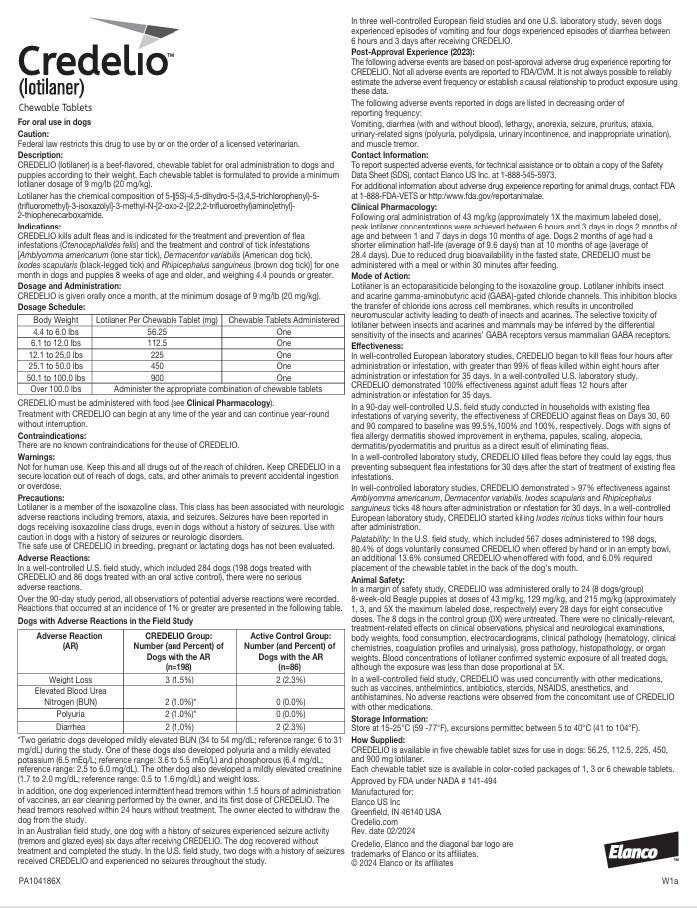This is Part Two of a three-part series on effective parasite prevention and preserving the human-animal bond through the entire process.
The prevalence of tick-borne diseases is increasing across the United States, endangering canine and human health and the dog-owner bond. While year-round use of tick protection products, diligent visual checks, and environmental management can reduce tick exposure, these methods may still leave pets and people vulnerable to tick attachment, disease transmission, and associated stress and anxiety.
Although isoxazoline-based products are generally considered effective against ticks, a head-to-head study revealed significant differences in two critical categories: speed of tick* kill and duration of efficacy.1 Understanding the differences, and why they matter, may help reduce tick-borne disease transmission in dogs while preserving the closeness of the human-animal bond.
Understanding isoxazolines
Four isoxazolines are currently approved to treat and control ticks in dogs, including lotilaner, afoxolaner, and sarolaner.1 Isoxazolines work by selectively binding to the calcium channels in muscles and nerves, blocking the transmission of neuronal signals, and causing tick paralysis and death. 2
Tough target: Tick* species
While multiple tick species carry concerning pathogens, the lone star tick is considered more difficult to kill because of its reduced sensitivity to isoxazoline treatment, making it an ideal subject for the comparison study.3
Speed matters: Speed of kill and disease transmission
Disease transmission time frames vary by pathogen and are influenced by a variety of factors, but may begin as early as 3 to 24 hours after tick attachment, emphasizing the necessity for a rapid speed of tick kill.4,5 In the study, 32 participant dogs were infested with 50 lone star ticks, which were allowed to attach and feed.1 At 48 hours after tick* application, dog groups were treated with either lotilaner, afoxolaner, or sarolaner.1 The control group received no
treatment.1 Credelio® (lotilaner) demonstrated the fastest speed of tick* kill among all three products and was twice as fast as the two competitive products.1
Duration of effect
Credelio also demonstrated a consistent and sustained effect, providing an initial significant reduction in live ticks* compared to the untreated control group at every 12-hour evaluation.1 At every 24-hour evaluation, only the Credelio-treated group achieved ≥90% efficacy. Credelio was also shown to have a longer half-life than its competitors, providing consistently high efficacy and a rapid speed of kill throughout the 30-day period to ensure protection against ticks* and tick* reinfestation.1
Impact for pet parents
Credelio’s fast, reliable, and effective tick control can provide far-reaching benefits for pets and owners alike, protecting the pet’s health and preserving the human-animal bond. Advantages include:
Reducing pathogen transmission — Rapid speed of kill may lessen the likelihood of tick-borne disease by eliminating ticks before they can feed, aiding in a better quality of life for the dog.
Controlling infestation-related discomfort and stress — Whether two ticks or two hundred, tick infestations create discomfort and anxiety for dogs and owners. Recognizing and reactively addressing a tick infestation requires thorough grooming, cleaning, treatment, and close observation, all of which can heighten stress for pets and create emotional or physical distance between a dog and their owner.
Providing peace of mind — Pet parents can feel confident that their dog’s effective tick control can provide comprehensive protection against ticks they may have overlooked while checking their pet. Additionally, because many tick-borne diseases present with subtle or intermittent changes, owners don’t have to fear that they are missing their pet’s early warning signs.
Promoting convenient, comfortable administration — Medicating pets is a common cause of fear, anxiety, and stress in dogs and their owners. The chewable formulation of Credelio (lotilaner) could potentially help minimize medication-related stress by making the process a mutually positive and rewarding experience.
Providing steady coverage — Consistent efficacy throughout the treatment period can provide greater peace of mind if clients forget to give their dog’s dose on time.
In the battle against tick-borne diseases, speed of tick kill and duration of effect play a critical role in providing steady protection and enhanced peace of mind. Credelio demonstrates key features that stop the clock on ticks* and their impact on the pet-owner bond.
*Lone Star Tick (Amblyomma americanum)
Sources:
- Elanco Animal Health. Data on file.
- Ramesh C., et al; Isoxazoline Toxicosis in Animals – Isoxazoline Toxicosis in Animals (2002). Merck Veterinary Manual.
- McTier, T. L., et al (2016). Determination of the effective dose of a novel oral formulation of sarolaner (Simparica™) for the treatment and month-long control of fleas and ticks on dogs. Veterinary Parasitology, 222, 12–17.
- Fernández-Ruiz, N., et al (2023). Passive collection of ticks in New Hampshire reveals species-specific patterns of distribution and activity. Journal of Medical Entomology, 60(3), 575–589.
- Kidd L., Breitschwerdt E.B (2003). Transmission times and prevention of tick-borne diseases in dogs. Compendium on Continuing Education for the Practicing Veterinarian, 25(10), 742-751.
CREDELIO INDICATIONS
Credelio kills adult fleas and is indicated for the treatment and prevention of flea infestations (Ctenocephalides felis) and the treatment and control of tick infestations [Amblyomma americanum (lone star tick), Dermacentor variabilis (American dog tick), Ixodes scapularis (black-legged tick) and Rhipicephalus sanguineus (brown dog tick)] for one month in dogs and puppies 8 weeks of age and older and weighing 4.4 pounds or greater.
CREDELIO IMPORTANT SAFETY INFORMATION
Lotilaner is a member of the isoxazoline class. This class has been associated with neurologic adverse reactions including tremors, ataxia, and seizures. Seizures have been reported in dogs receiving this class of drugs, even in dogs without a history of seizures. Use with caution in dogs with a history of seizures or neurologic disorders. The safe use of Credelio in breeding, pregnant or lactating dogs has not been evaluated. The most frequently reported adverse reactions are weight loss, elevated blood urea nitrogen, polyuria, and diarrhea. For full prescribing information see Credelio package insert.
Credelio, Elanco, and the diagonal bar logo are trademarks of Elanco or its affiliates. Other company and product names are trademarks of their respective owners.
©2024 Elanco or its affiliates. PM-US-24-1345
 This article was reviewed/edited by board-certified veterinary behaviorist Dr. Kenneth Martin and/or veterinary technician specialist in behavior Debbie Martin, LVT.
This article was reviewed/edited by board-certified veterinary behaviorist Dr. Kenneth Martin and/or veterinary technician specialist in behavior Debbie Martin, LVT.
Continue learning through Part One & Part Three of this series.
Want to learn more about Fear Free? Sign up for our newsletter to stay in the loop on upcoming events, specials, courses, and more by clicking here.




